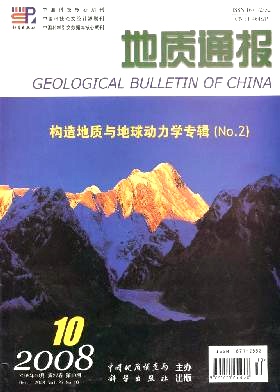YAN Dan-ping, JIN Zhe-long, ZHANG Wei-chen, LIU Shao-feng. Rock mechanical characteristics of the multi-layer detachment fault system and their controls on the structural deformation style of the Sichuan-Chongqing-Hunan-Hubei thin-skinned belt, South China[J]. Geological Bulletin of China, 2008, 27(10): 1687-1697.
| Citation: |
YAN Dan-ping, JIN Zhe-long, ZHANG Wei-chen, LIU Shao-feng. Rock mechanical characteristics of the multi-layer detachment fault system and their controls on the structural deformation style of the Sichuan-Chongqing-Hunan-Hubei thin-skinned belt, South China[J]. Geological Bulletin of China, 2008, 27(10): 1687-1697.
|
Rock mechanical characteristics of the multi-layer detachment fault system and their controls on the structural deformation style of the Sichuan-Chongqing-Hunan-Hubei thin-skinned belt, South China
-
Abstract
The Sichuan-Chongqing-Hunan-Hubei multi-layer detachment thin-skinned belt is developed between the Qinling-Dabie orogenic belt and Xuefeng thick-skinned belt and the Sichuan basin. This thin-skinned belt formed by NW-directed detachment of a number of Late Mesozoic rock layers of weakness. However, traditional surface geological survey along cannot reveal how various detachment layers control the relation between folds and faults in the study. Therefore, identification of the detachment faults at depths is the key to understanding the structural styles and their formation mechanism in the area. The authors used the uniaxial rock mechanical methods to test the rock samples from variable layer of the thin-skinned belt along a geological section from Daxian to Dayin. The test results together with previous published data reveled at least five possible regional detachment layers. These layers are mainly composed of pelite, siltstone and argillaceous limestone, distributed along the Lower Cambrian Niutitang Formation (Det I), Lower Silurian Luoreping and Longmaxi formations (Det II), Lower Permian Qixia Formation (Det III), Lower Triassic Daye Formation (Det IV) and Middle Triassic Badong Formation (Det V) respectively. Field survey further proved that: Det I controls fault-bend folds and imbricate fans in the deep tectonic level, and Det II probably controls fault propagation folds and detachment folds in the middle tectonic level, and Det III probably together with Det IV and Det V controls the Jura-type folds in the shallow tectonic level.
-

-
-
Access History







 DownLoad:
DownLoad: